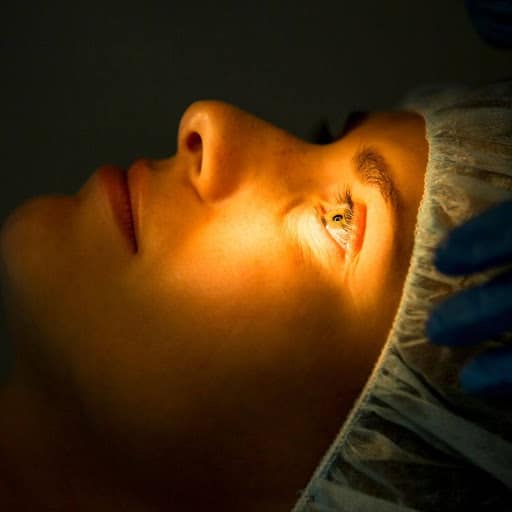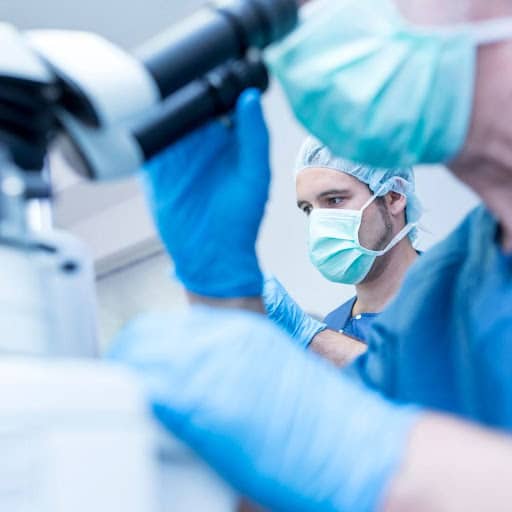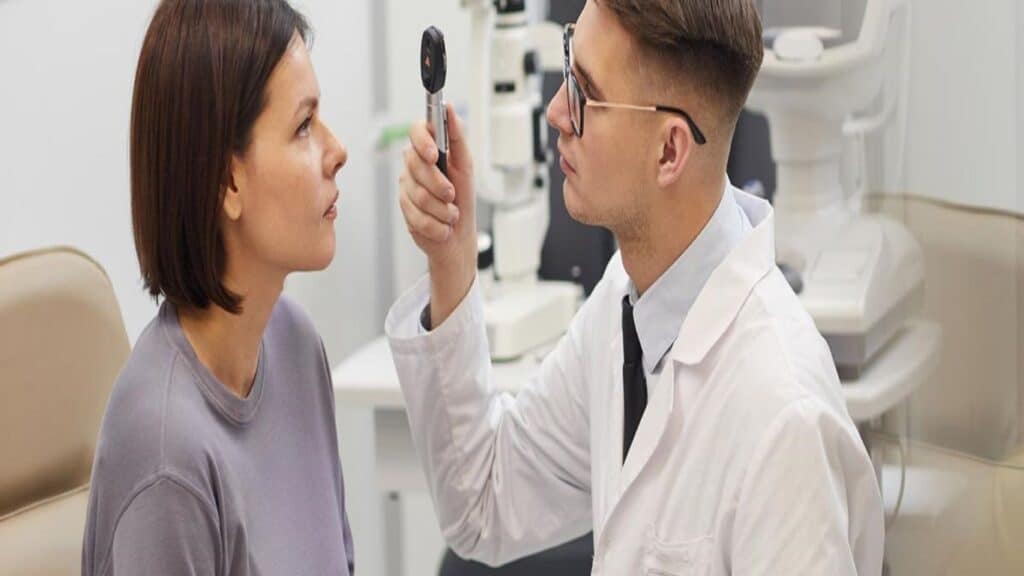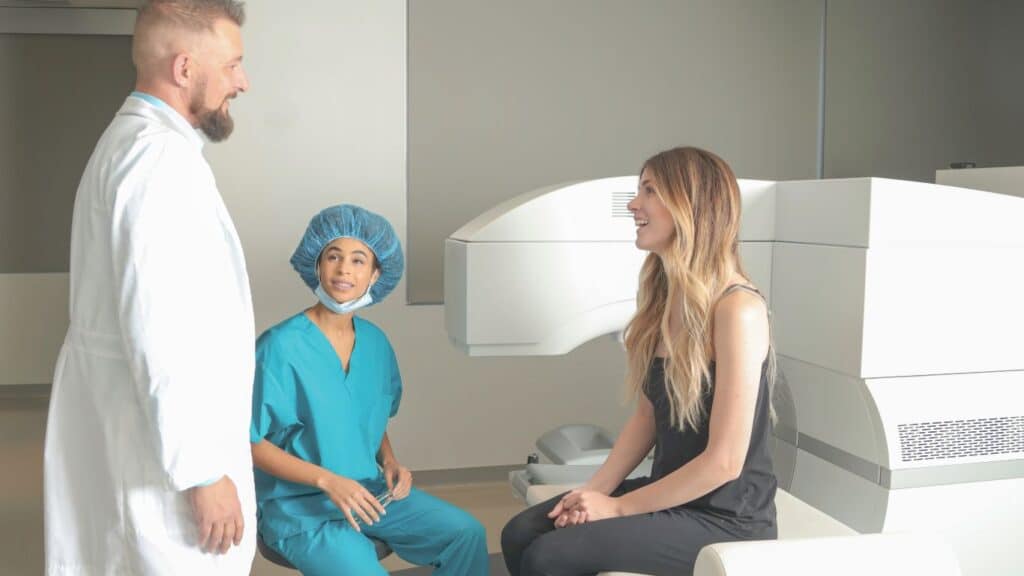
Squinting at street signs, struggling to decipher the menu at your favorite dimly lit restaurant, or the constant juggle between your prescription glasses and sunglasses—these are just a few signs you're probably all too familiar with. And with each inconvenience, the irritation mounts, nudging you closer to the possibility of LASIK eye surgery.
Imagine a life free from the daily frustrations of impaired vision, where the world is always clear, without the barrier of corrective lenses. According to the American Academy of Ophthalmology, every year, around 800,000 Americans opt for LASIK, seeking not just the clarity of vision but the emotional freedom that comes with it. However, among the promise of a lens-free life, concerns about pain during the procedure loom large. "Does LASIK surgery hurt?" or “Is LASIK eye surgery painful?" These are just a few questions that are circling your mind.
But worry not, because, in this post, we'll fully explore what to expect in terms of pain perception during laser eye surgery, easing your concerns and illuminating the path to clearer vision.
LASIK eye surgery might sound like something straight out of a sci-fi movie, but it's a pretty straightforward procedure that has been fine-tuned over decades.
First off, LASIK stands for Laser-Assisted In Situ Keratomileusis. I know, it's a mouthful, but essentially, it's a procedure designed to correct vision by reshaping the cornea—the clear, round dome at the front of your eye. You can think of the cornea as the window that controls and focuses the light that comes into your eye. When this "window" isn't perfectly shaped, it causes your vision to be less than sharp. The goal of LASIK is to sculpt this cornea into an ideal shape for ultra-clear vision.
Alright, but what about the anatomy involved? Well, we've mentioned the cornea, which is the star of the LASIK show. But, the precision of LASIK also hinges on the understanding of other parts of the eye, like the pupil (the opening that lets light in), the lens (behind the pupil, focuses light onto the retina), and the retina (the nerve layer at the back of the eye that senses light and sends signals to the brain). During the surgery, the laser's alterations are focused solely on the cornea, but it's the collaborative effort of all these parts that results in the sharp vision you experience post-LASIK.
Stepping into the pre-surgery phase, it's time to focus on what you can do to ensure the best possible outcome from your LASIK surgery. Consider this stage as laying the groundwork for a successful procedure and recovery.
The consultation phase is crucial in determining whether you're an ideal candidate for LASIK. During this time, your eye doctor will conduct a thorough eye examination, checking for factors like corneal thickness, eye dryness, and the overall health of your eyes. This step not only evaluates your suitability for the procedure but also helps in customizing the surgery to your specific needs. According to a study, tailored consultations can significantly improve the accuracy of outcome predictions, maximizing patient satisfaction. The consultation is also a golden opportunity for you to voice any concerns or questions you might have about the procedure. For example, you can ask our team at Texas Vision & Laser Center questions such as: "Does LASIK eye surgery hurt?", "Is LASIK surgery painful?"
Remember, no question is too small when it comes to your eyesight.
Following a successful consultation, your surgeon will provide you with a set of pre-operative guidelines to prepare your eyes for surgery. For instance, we may ask you to refrain from wearing contacts, opt for glasses only, and use preservative-free eye drops to prepare the ocular surface for the procedure.

The big day has finally arrived, and it's natural to feel a mix of excitement and nerves. This is the moment you’ve been preparing for, where clear vision is just a procedure away. Now, let’s walk through what you can expect as you step into the clinic, focusing on the initial procedures and your anesthesia options.
Upon your arrival at our clinic, Texas Vision & Laser Center, the anticipation you might be feeling is perfectly normal. First and foremost, you'll be warmly greeted by our professional clinic staff, who are there to ensure you're comfortable and well-informed about every step of the process. You'll undergo a final pre-operative exam; this is just to double-check the specifics of your eye's health and ensure everything is aligned for the procedure as planned. It might feel a bit redundant, but this meticulous attention to detail is crucial for achieving the best outcomes. Preparations on the day of the surgery include sanitizing the area around your eyes to prevent any infections.
At Texas Vision & Laser Center, you are our top priority, and we understand that everyone is different. We are there for you to answer any lingering questions and provide reassurance that everything will be alright.
Contact Us Today To Learn More About LASIK Eye Surgery at Texas Vision & Laser Center!
When it comes to LASIK, the thought of being awake might seem daunting, but the anesthesia options available ensure you won’t feel severe pain during the procedure. Typically, topical anesthetic eye drops are used to numb the surface of your eyes. These numbing eye drops block the nerve fibers in your cornea responsible for sensation, making the procedure virtually painless. Studies, such as those referenced in the Cureus journal, have shown that patients report little to no discomfort during the procedure due to these highly effective anesthetics. Some patients might feel a slight pressure sensation when the corneal flap is being created, but this is brief and not painful. It’s important to discuss with your surgeon if you have concerns about pain management or anxiety about the procedure. They can provide additional reassurance or adjustments to your anesthesia plan to ensure your comfort throughout.
Stepping into the LASIK procedure, you're at the heart of the transformation, where precise technology meets expert care. It's an exciting phase, where years of research and advancements come together to refine your vision.
The LASIK surgery itself is a testament to the marvels of modern medicine, typically completed within 20 to 30 minutes for both eyes. Initially, your surgeon will use a specialized instrument to create a thin, circular flap in the cornea. A laser is then used to reshape the underlying corneal tissue, correcting refractive errors that cause myopia, hyperopia, and astigmatism. The corneal flap is carefully repositioned afterward, which naturally adheres to the corneal surface, eliminating the need for stitches. Throughout, the surgeon monitors the laser’s actions, guided by prior diagnostics, to customize the reshaping based on your unique eye structure.
Now that we've navigated through the ins and outs of preparing for, and undergoing LASIK laser eye surgery, it's crucial to turn our focus to what happens once the procedure is completed. A smooth recovery is key to the success of the surgery and the enhancement of your vision.
The period immediately following LASIK surgery is critical for ensuring optimal healing and minimizing potential complications. Patients are advised to rest for several hours post-surgery with their eyes closed. This not only aids in the initial healing process but also reduces discomfort. It's imperative to follow the surgeon's guidelines, which typically include avoiding rubbing or touching the eyes, as this can dislodge the corneal flap created during surgery. Additionally, eye drops, both antibiotic and anti-inflammatory, are prescribed to prevent infection and reduce inflammation. A common advice is to shield the eyes with sunglasses when outdoors to protect against UV rays and debris, further assisting the healing process. Understanding and adhering to these immediate aftercare instructions is a non-negotiable step towards a swift and successful recovery.
After undergoing LASIK surgery, it’s normal to experience certain symptoms as your eyes adjust and heal. However, being prepared to manage these symptoms can significantly improve your comfort levels and recovery experience. A notable study outlines common post-operative symptoms such as dry eyes, mild pain or discomfort, sensitivity to light, and temporary vision fluctuations. To mitigate these, we suggest the liberal use of preservative-free lubricating eye drops for dry eyes. To minimize discomfort or pain, you can typically be managed with over-the-counter pain relief, although it's relatively minimal for most patients. Wearing sunglasses can help manage light sensitivity and is especially useful when venturing outdoors.
The perception of LASIK surgery as a painful procedure is largely a myth. Advanced anesthesia options, precise surgical techniques, and comprehensive post-operative care work together to ensure a comfortable experience for patients. Most individuals report minimal discomfort during and after the procedure, thanks to the meticulous planning and execution by the surgical team. Ultimately, LASIK offers a promising path to improved vision and a life free from the constraints of glasses or contact lenses.
Don't let fear stand in the way of clear vision. Contact Texas Vision & Laser Center today to schedule a consultation and learn how LASIK can benefit you.
Contact Us Today To Learn More About LASIK Eye Surgery at Texas Vision & Laser Center!



